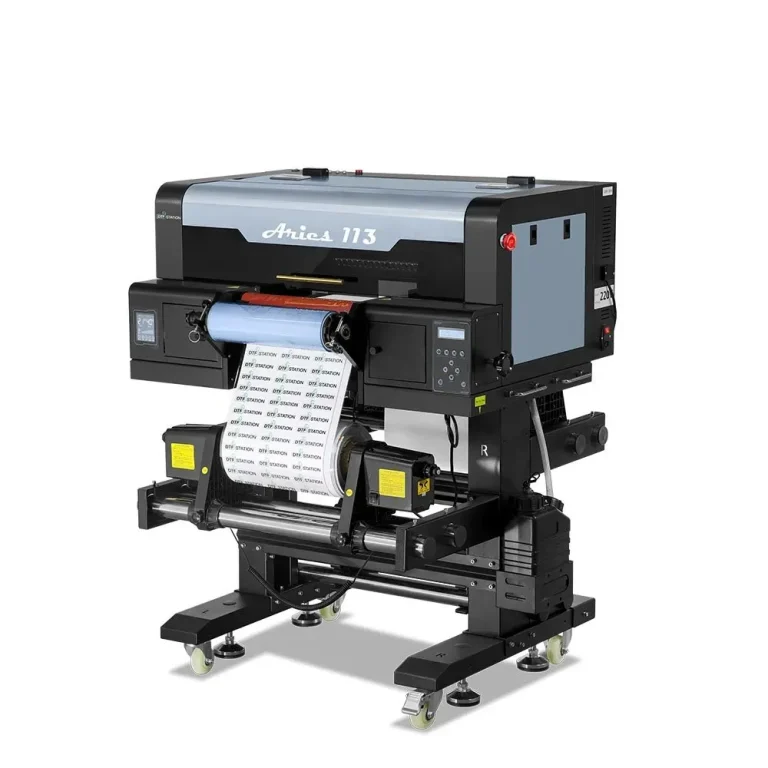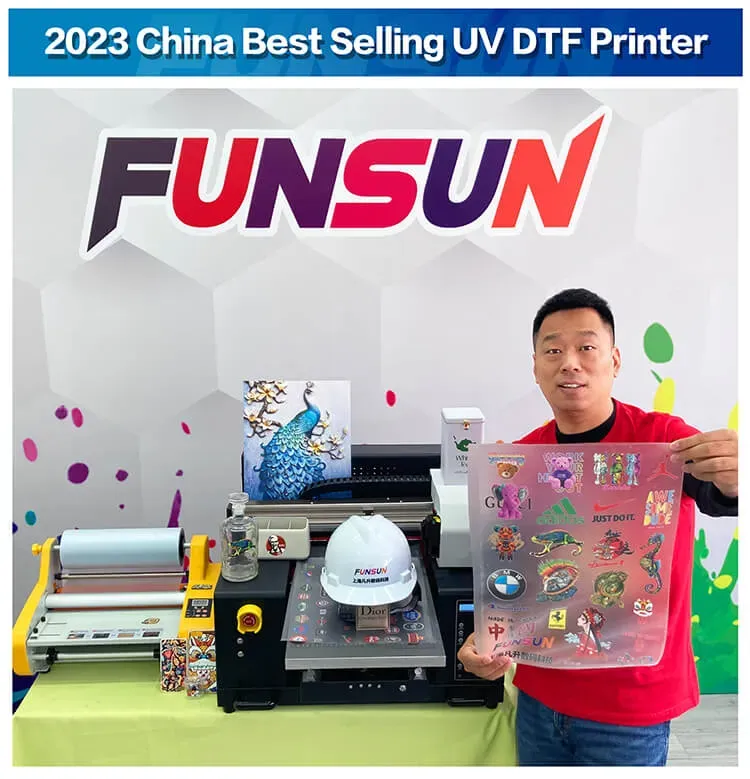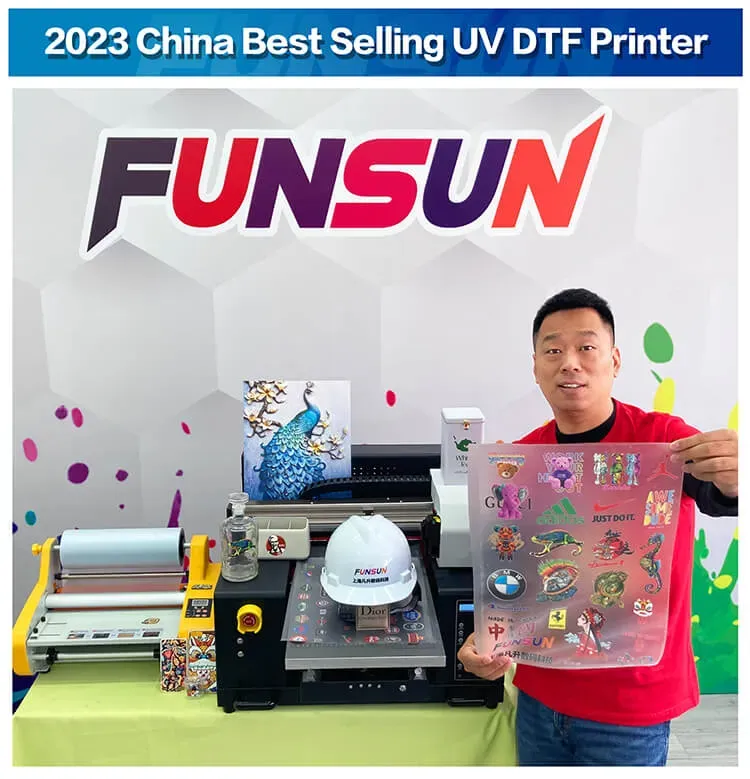UV DTF Technology: The Future of Digital Printing
In the rapidly evolving landscape of digital printing, **UV DTF technology** is quickly establishing itself as a game-changer for custom printing solutions. This innovative approach combines the advantages of UV printing and direct-to-film capabilities, offering businesses the opportunity to print on a wide array of substrates with exceptional quality and durability. With its fast-drying inks cured instantly under UV light, UV DTF technology ensures that vibrant prints are not only eye-catching but also resistant to wear and fading. As sustainability becomes increasingly important, this technique helps reduce waste and energy consumption in the printing process. Join us as we delve deeper into the advancements, applications, and future potential of UV DTF technology in revolutionizing the digital printing industry.
Ultraviolet Direct to Film (UV DTF) technology represents a notable shift in the realm of digital printing, integrating aspects of both ultraviolet (UV) printing and direct film applications. By leveraging this cutting-edge technique, printing businesses can efficiently create custom designs on diverse materials, from textiles to rigid surfaces, minimizing the need for extensive preparation. The application of reactive UV inks significantly boosts the quality and longevity of printed products, catering to an increasingly personalized market. Moreover, this approach aligns perfectly with the ongoing transition towards sustainable printing methods by reducing harmful emissions and energy usage. As the demand for unique printed products continues to surge, the adoption of UV DTF technology is poised to transform various industries, fostering growth and innovation.
Understanding UV DTF Technology in Digital Printing
UV DTF technology, short for Ultraviolet Direct to Film technology, represents a groundbreaking leap in the realm of digital printing. Its hybrid nature combines the efficiency of UV printing with the flexibility of direct-to-film methods, allowing for vibrant prints on a wide array of substrates. This technology stands out by eliminating the need for extensive pre-treatment processes that traditionally hinder the printing workflow, enabling quicker turnarounds without compromising quality.
The rise of UV DTF technology is significantly attributed to the innovation in UV-curable inks, which cure upon exposure to ultraviolet light. This quick curing process not only preserves color integrity but also produces durable prints that can withstand exposure to harsh conditions, making it ideal for various applications, from promotional merchandising to outdoor signage.
The Environmental Impact of UV DTF Technology
In the face of growing environmental concerns, UV DTF technology seeks to address the pressing need for sustainable practices in the printing industry. Unlike conventional printing methods that might rely on solvent-based inks, the use of UV-curable inks in UV DTF significantly reduces volatile organic compound emissions, raising standards for environmentally responsible printing.
Moreover, UV DTF technology contributes to energy efficiency in the production process. The curing of inks through light energy not only minimizes waste but also optimizes energy use compared to older technologies. By adopting UV DTF technology, businesses align with eco-friendly practices, appealing to a consumer base increasingly inclined towards sustainability.
Recent Advancements in UV DTF Technology
The landscape of UV DTF technology has witnessed remarkable advancements, particularly in printer capabilities and ink formulations that enhance print quality. The introduction of dual-head printer systems has allowed for increased printing speeds and refined color accuracy, allowing businesses to maintain quality while scaling production. This evolution makes UV DTF printers invaluable for firms that wish to keep pace with growing consumer demands for customized products.
Furthermore, technological upgrades have made it possible to print on diverse materials, from flexible textiles to rigid surfaces like wood and metal, without extensive pre-treatment. As a result, UV DTF technology expands the horizon for creative applications and customization, enabling brands to broaden their product offerings while fulfilling unique consumer preferences.
The Growing Market for UV DTF Technology
The demand for UV DTF technology is expected to soar as the trend for customization in consumer products continues to expand. Industries ranging from fashion to home decor are increasingly harnessing UV DTF capabilities for producing bespoke items that cater specifically to individual customer tastes. With the essential need for quick turnaround times in today’s market, businesses leveraging UV DTF technology can gain a significant competitive edge.
Reports suggest that the UV DTF printing market is on the brink of explosive growth due to rising demands for digital short runs and prototypes. As manufacturers seek to capitalize on this market, investing in UV DTF technology offers a path to meeting these demands effectively while promoting diversified product lines.
Applications of UV DTF Technology Across Industries
The versatility of UV DTF technology has opened its doors to various sectors, revolutionizing how products are customized. In textiles, for instance, manufacturers can print detailed designs on any fabric type to create unique apparel or promotional merchandise that attracts a distinct audience. This capability allows brands to make a mark in competitive markets through distinctive visual presentations.
In addition to textiles, UV DTF technology has valuable applications in signage and packaging. The durability of UV-cured inks ensures that signs maintain their colors in outdoor settings without fading, while custom packaging can enhance consumer experience and brand identity. By meeting the aesthetic and practical needs of businesses, UV DTF technology establishes itself as a key player in modern printing applications.
Challenges Faced by UV DTF Technology
Even with the promising benefits, businesses interested in UV DTF technology encounter several challenges. Initial investment costs for high-end printing machines are substantial, which may deter smaller companies from adopting this cutting-edge technology. Additionally, as UV DTF printers require specialized operational skills, the learning curve can present another obstacle to effective use.
Moreover, investing in training programs is essential to ensure staff can efficiently handle the advanced machinery associated with UV DTF technology. Printing companies must also weigh the operational complexities against potential returns, making it critical to thoroughly assess these challenges before making a commitment to this innovative technology.
Frequently Asked Questions
What is UV DTF technology in digital printing?
UV DTF technology, or Ultraviolet Direct to Film technology, is an innovative digital printing method that combines UV printing with direct-to-film processes. It allows for high-quality prints on various substrates without the need for extensive surface preparation, utilizing UV-cured inks for vibrant and durable results.
How does UV printing differ from traditional printing methods?
Unlike traditional printing techniques that often require pre-treatment of surfaces, UV printing and UV DTF technology utilize fast-drying UV-cured inks, allowing for direct printing on various materials. This results in quicker production times and superior print durability, making it ideal for both indoor and outdoor applications.
What are the environmental benefits of using UV DTF technology?
UV DTF technology contributes to sustainable printing practices by using eco-friendly inks that minimize harmful emissions during the printing process. Additionally, the UV curing method reduces energy consumption compared to traditional printing, making it a greener option for custom printing solutions.
What industries can benefit from UV DTF technology?
UV DTF technology is versatile and can be applied across various industries, including textiles for custom apparel, signage for both indoor and outdoor displays, and packaging for unique branding solutions. Its adaptability to different materials enhances its appeal to businesses looking to diversify their offerings.
What challenges do businesses face when adopting UV DTF technology?
While UV DTF technology offers many advantages, businesses may encounter challenges such as the high initial investment in advanced printers and the need for specialized training to operate them effectively. These factors can deter smaller companies from fully embracing the technology.
Why is UV DTF technology essential for custom printing markets?
As consumer demand for personalized and unique products grows, UV DTF technology is essential for custom printing markets. It enables businesses to produce high-quality, short-run prints that cater to individual customer preferences, helping them stay competitive in a rapidly evolving marketplace.
| Key Point | Description |
|---|---|
| Introduction to UV DTF Technology | UV DTF technology combines UV printing and direct-to-film processes, allowing for direct printing on various substrates with minimal surface preparation. |
| Recent Advancements | Enhancements in ink formulations and printer technology have improved print quality and durability, supporting flexible and rigid materials without pre-treatment. |
| Environmental Considerations | UV DTF technology promotes sustainability through eco-friendly inks and reduced energy consumption compared to traditional printing methods. |
| Market Growth | An increasing demand for customizable products is driving growth in the UV DTF printing market, particularly in fashion, home decor, and promotional items. |
| Applications Across Industries | Used in textiles, signage, and packaging, UV DTF technology delivers vibrant prints for diverse applications. |
| Limitations and Challenges | High initial investment costs and the complexity of operations might deter smaller businesses from adopting UV DTF technology. |
Summary
UV DTF technology represents a significant advancement in digital printing, merging high-quality outputs with eco-friendly practices and unmatched versatility. As the industry evolves, this innovative technology is poised to reshape the landscape of custom printing, allowing businesses to meet the growing demand for personalized and sustainable products. With advancements in printer capabilities and ink formulations, companies that adopt UV DTF technology will be well-equipped to thrive in a competitive marketplace, adapting to consumer needs while minimizing environmental impact.







